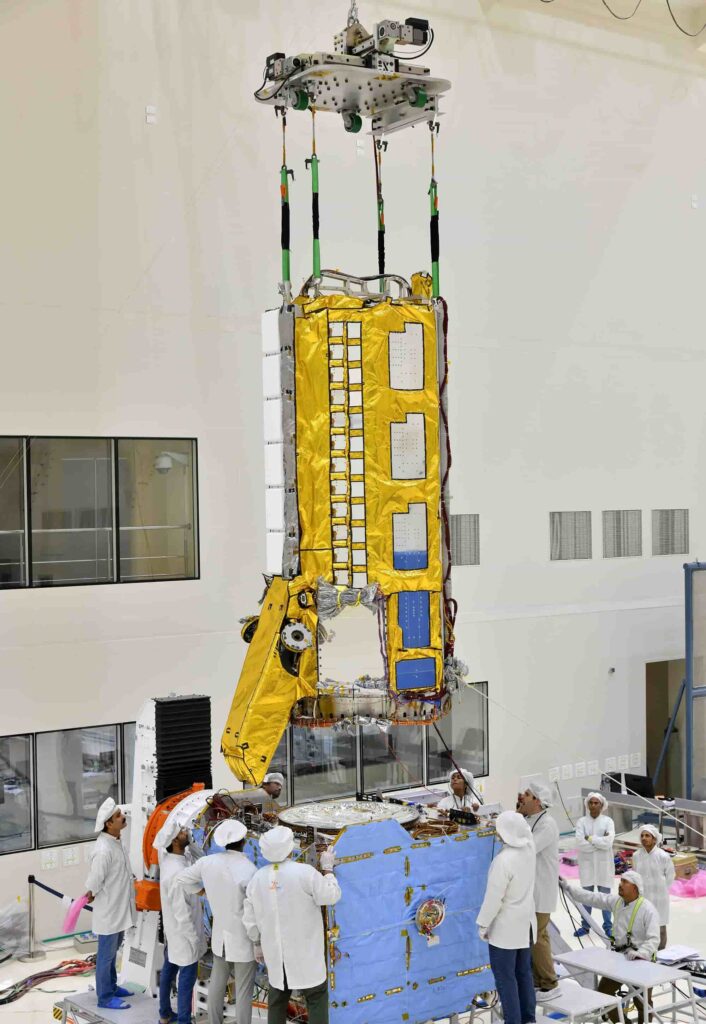In an exciting development in the realm of space exploration, NASA and the Indian Space Research Organisation (ISRO) have joined forces to develop the NASA-ISRO Synthetic Aperture Radar (NISAR) satellite. This powerful satellite, set to launch in early 2024, aims to track and monitor Earth’s land and ice surfaces in unprecedented detail. With its ability to observe almost every part of the planet every 12 days, NISAR will provide invaluable insights into various environmental factors, including the dynamics of forests, wetlands, and agricultural lands.
Unifying Cutting-Edge Technologies for Enhanced Observation
The NISAR satellite, roughly the size of an SUV and adorned with gold-colored thermal blanketing, houses a cylindrical radar instrument payload that consists of two radar systems. The S-band radar is specifically designed for monitoring crop structures and the roughness of land and ice surfaces, while the L-band instrument can penetrate dense forest canopies to study the composition of trees. Both radar systems operate at different wavelengths, with the S-band signals measuring approximately 4 inches (10 centimeters) and the L-band signals measuring 10 inches (25 centimeters). Furthermore, these sensors have the remarkable ability to collect data day and night, regardless of cloud cover.
Key Features of NISAR Satellite
| Radar Systems | Capabilities |
|---|---|
| S-band radar | Monitoring crop structure and land/ice surface roughness |
| L-band radar | Penetrating dense forest canopies and studying tree composition |
A Collaborative Journey of Technological Excellence
The development of the NISAR satellite has been a collaborative effort involving multiple locations and organizations. The S-band radar was constructed at the Space Applications Centre in Ahmedabad, India, and subsequently transported to NASA’s Jet Propulsion Laboratory (JPL) in Southern California. At JPL, engineers were already working on the L-band radar, which was then integrated with the S-band radar on the satellite’s payload frame. The combined payload was eventually transported to the U R Rao Satellite Centre (URSC) in Bengaluru, India, in March 2023 for further assembly and testing.

Creating the Central Nervous System of the Satellite
Simultaneously, technicians and engineers at URSC and JPL collaborated to develop the satellite’s main body, known as the bus. The bus, covered in blue blanketing for protection, serves as the backbone of the satellite, providing essential functionalities such as power, navigation, pointing control, and communications. Components and systems from both ISRO and JPL were integrated into the bus, highlighting the international collaboration that underpins the NISAR mission.
Integrating Components for a Comprehensive System
Following the joining of the radar payload and bus in a clean room at URSC, NASA and ISRO teams have been working diligently to route extensive cabling between these critical components. The satellite’s solar panels, along with a drum-shaped wire-mesh reflector, which will unfold from a 30-foot (9-meter) boom, are yet to be attached. The impressive 40-foot (12-meter) diameter reflector will serve as the largest radar antenna of its kind ever launched into space.
Charting the Path Ahead: Testing and Launch Preparations
Currently, the NISAR satellite is undergoing comprehensive performance testing, ensuring its readiness to endure the demanding launch process and meet all operational requirements once deployed in orbit. Subsequent rounds of environmental testing will further validate the satellite’s ability to withstand the rigors of space. Once these tests are successfully completed, the NISAR satellite will be transported approximately 220 miles (350 kilometers) eastward to the Satish Dhawan Space Centre. There, it will be integrated into its launch fairing and mounted atop ISRO’s Geosynchronous Satellite Launch Vehicle Mark II rocket for its journey into low Earth orbit.
In summary, the development of the NISAR satellite represents a significant milestone in Earth observation. The collaboration between NASA and ISRO has brought together cutting-edge technologies and expertise from both organizations to create a revolutionary satellite that will revolutionize our understanding of the planet’s land and ice surfaces. With its advanced radar systems and unparalleled monitoring capabilities, NISAR holds the potential to unlock new insights into various environmental phenomena, paving the way for a better future understanding of our planet.




